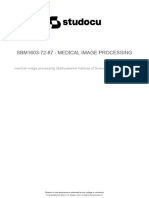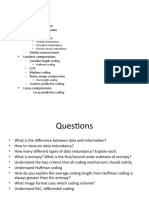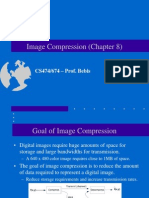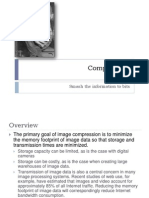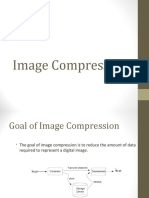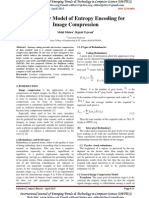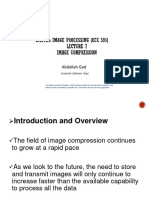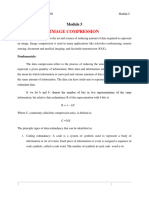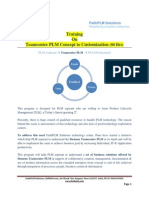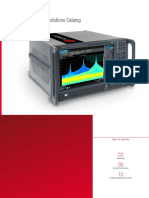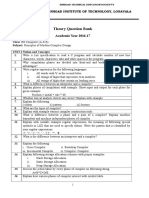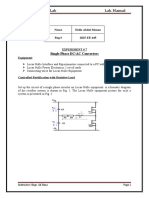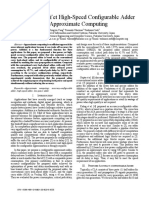0% found this document useful (0 votes)
20 views14 pagesImage Compression
Chapter 5 discusses image compression, focusing on reducing data size for storage and transmission by eliminating redundancy. It covers types of compression, including lossless and lossy methods, and introduces various algorithms like Huffman coding, run-length encoding, and predictive coding. The chapter also highlights the importance of human perception and the role of redundancy in achieving effective compression.
Uploaded by
Subodh AwasthiCopyright
© © All Rights Reserved
We take content rights seriously. If you suspect this is your content, claim it here.
Available Formats
Download as PDF, TXT or read online on Scribd
0% found this document useful (0 votes)
20 views14 pagesImage Compression
Chapter 5 discusses image compression, focusing on reducing data size for storage and transmission by eliminating redundancy. It covers types of compression, including lossless and lossy methods, and introduces various algorithms like Huffman coding, run-length encoding, and predictive coding. The chapter also highlights the importance of human perception and the role of redundancy in achieving effective compression.
Uploaded by
Subodh AwasthiCopyright
© © All Rights Reserved
We take content rights seriously. If you suspect this is your content, claim it here.
Available Formats
Download as PDF, TXT or read online on Scribd
/ 14







